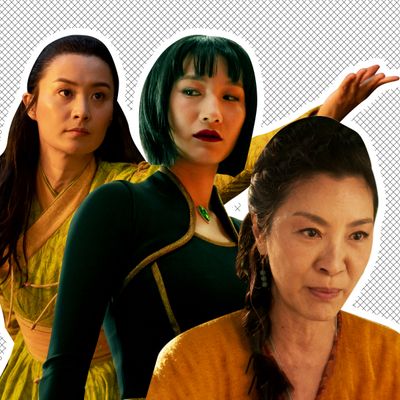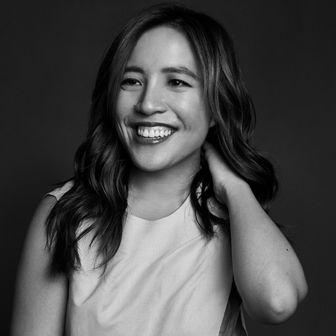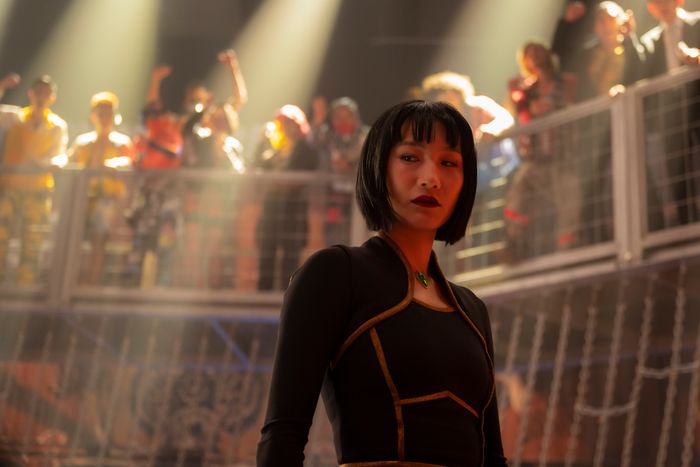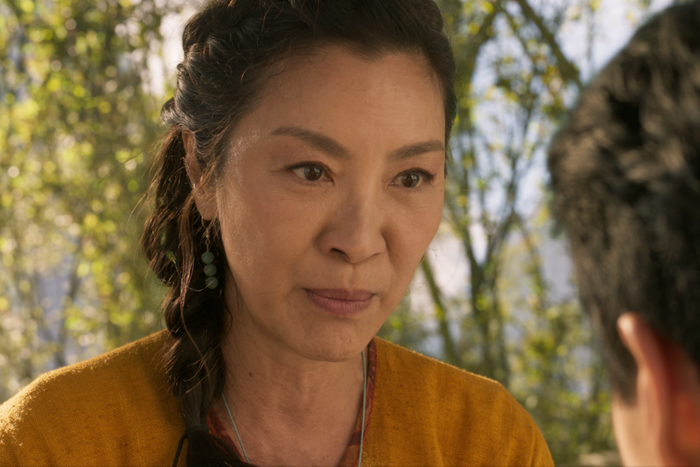
Spoilers ahead for Shang-Chi and the Legend of the Ten Rings
The last superhero movie I watched was one subprime-mortgage crisis, one pandemic, and one gender reckoning at Marvel ago. So it has been a long time. The women in that film weren’t main characters; they were love interests or damsels in distress. It was was fine and obviously disappointing.
As a child, I used to spend my summers in Taiwan, and my diet included fresh, pillowy pineapple buns consumed while watching TV. Since our Mandarin wasn’t good enough to fully understand anything dialogue-driven, my brother and I watched a lot of Asian action movies. With the ’70s-era boom of Hong Kong kung fu cinema, there was always one playing on some channel. That was when I first saw the five-foot-four Michelle Yeoh as Jackie Chan’s fighting equal in Supercop, decades before America saw fit to cast her as a Bond girl. There’s one scene I remember where she’s eating in a restaurant, wearing a raspberry cardigan, her hair in two braids with pink ribbons. Then she jumps with a “Waugh!” into a flying split kick and executes her signature, the scorpion kick, a move that looks like a vertical split. She later told the Guardian that even Chan had thought women belonged in the kitchen rather than in action movies. “Until I kicked his butt,” she says.
My grandma favored wuxia shows, a genre of martial-arts melodrama set in postmodern China that dates from the 1960s. It features high-flying swordplay, because not every character is bound by gravity. Swords clashed on the ground and then quickly became airborne, with fighting shifting onto roofs or treetops. The female protagonists had great style, although they were secondary characters. They always had long, sweeping hair pulled back princess style and embellished with knotted hairpins or ornaments that always stayed in place even as they were jumping from branch to branch. They wore traditional, flowy, robelike jewel-tone garments from the Ming period. From their voluminous sleeves they were always dramatically pulling out hidden swords or bows and arrows. I thought they looked so free and beautiful, especially as the wind billowed and rippled through their hair and silky clothes.
It took almost two decades for me to see a powerful Asian female hero Stateside. Shang-Chi and the Legend Of The Ten Rings, as you might already know, features the Marvel Cinematic Universe’s first Asian superhero, Simu Liu. Despite watching and loving the movie, I’m still not sure what the Ten Rings are or what they do exactly. (If you want to be nitpicky, they’re really more bracelets than rings … but it doesn’t have the same ring to it.) But I do know that the true force of the movie is an entire cast of not-so-secret women. Thanks to them, whole craggy mountains crack open. An underground fight club in Macau becomes an MMA-worthy arena with running roundhouse kicks and double-collar tie moves. The wind swirls with an unseen power strong enough to knock evil-empire head Tony Leung off his feet.
There’s Ying Li, played by Fala Chen, who bends the air and uses the deflective moves of tai chi to literally knock Tong Leung on his ass (and in the process sweep him into love). Her introduction scene with Leung, a balletic mix of gives and pulls, green and golds, fighting and parrying, is the second-longest combat sequence in the movie. Although her role in the movie is brief, the former Juilliard student embodies her role as a protector and is the only worthy foil to Leung’s destructiveness. You see how her untimely death emotionally anchors and powers the entire story.
Some critics of the Shang-Chi character have said that his backstory is undeveloped, with Vulture’s Alison Willmore calling him a protagonist who hasn’t “entirely decided on what he’s representing.” That’s not the case with Xiaoling, Shang-Chi’s sibling, the sister who would deck you for calling her little. Just as formidable as Shang-Chi and a self-trained martial-arts fighter, she has been let down by men: Leung’s Wen Wu, who never believed she was worthy of attention or education, and the hero, who abandoned her for a fresh, unburdened start. With her blunt bangs and red lipstick, Meng’er Zhang, in her first film role ever, has a gritted determination to her fight moves, even as she’s doing a spinning backheel kick that looks effortless. Her role is so compelling that some are already speculating (and hoping) that she will have a recurring role in the MCU.
And, finally, Yeoh embodies her role as a daunting, tough-loving female authority figure. Wearing robes of vermillion, she is guardian to the mythical, beautiful city of Ying Nan and leads both human and furry creatures into battle. Awkwafina plays more than her normal comedic sidekick role here, having learned archery for the movie, a skill she employs at a pivotal moment.
In the final scene of the movie, Xiaoling is shown in her childhood bedroom looking at her tacked-up posters of the graffiti art of her feminist and rock heroes. She then slowly walks out to her new throne, which she slouchily and confidently sprawls across, the heir apparent of Wen Wu’s empire. The movie pans out to reveal the rebranding of the new Xiaoling regime — masked female warriors of all body types and skin tones training in combat and the stone walls of her new lair, redecorated with the rebellious art of her teenage years. Here’s hoping that in whatever comes next following the success of Shang-Chi, it’s all about the women.








